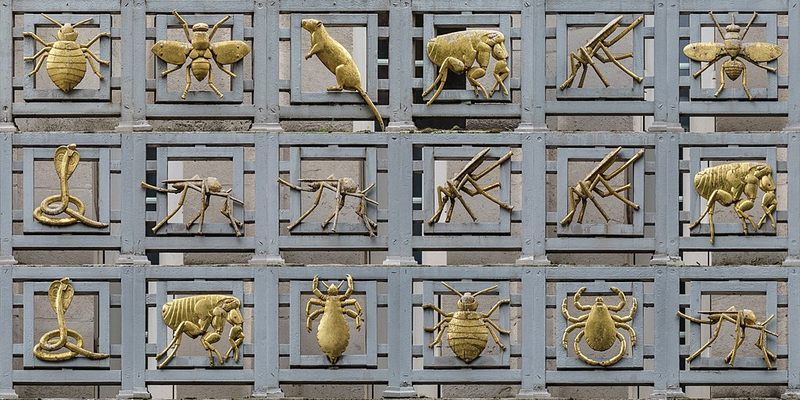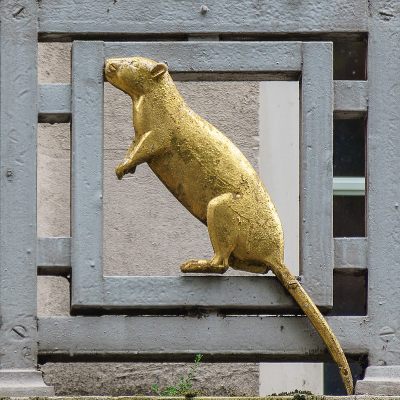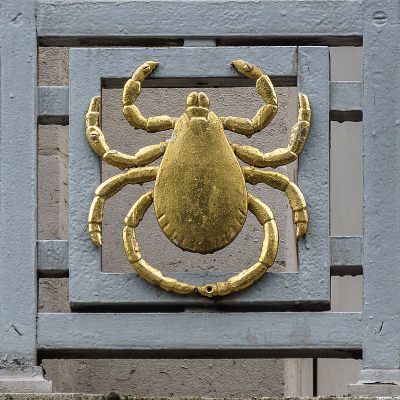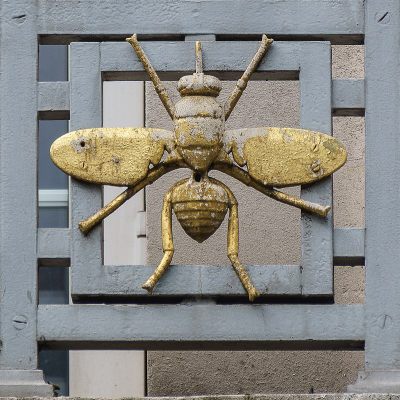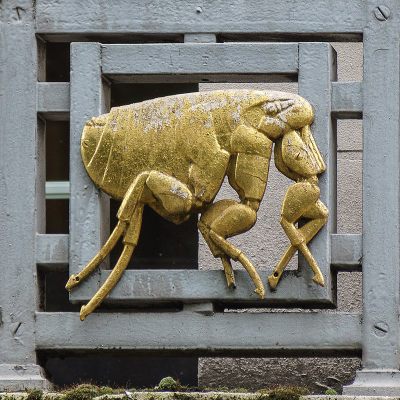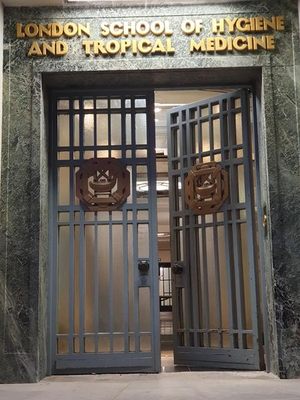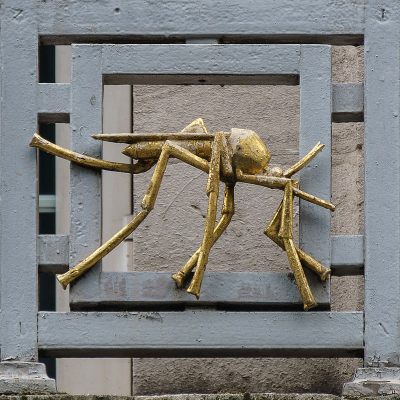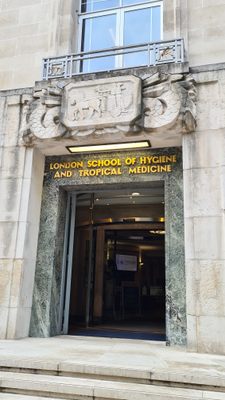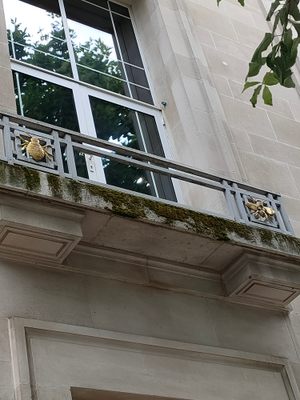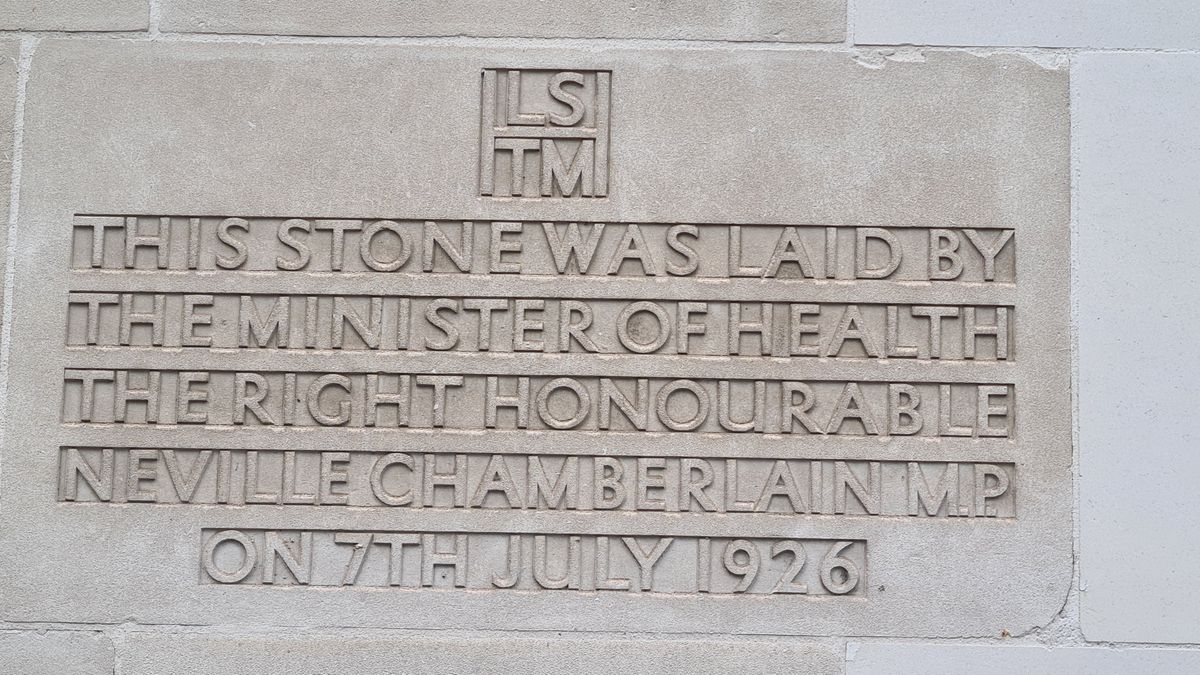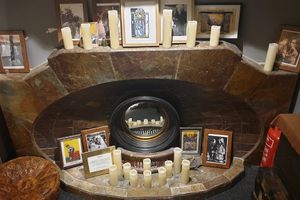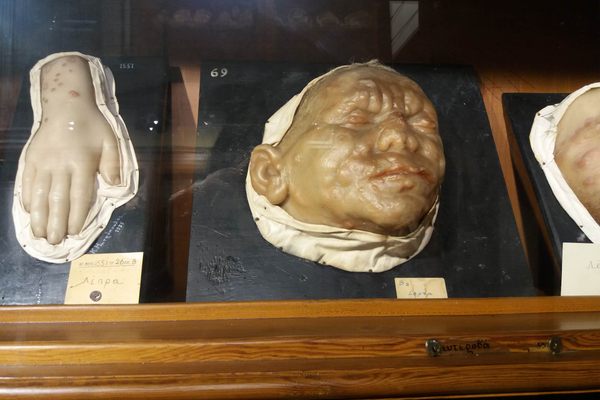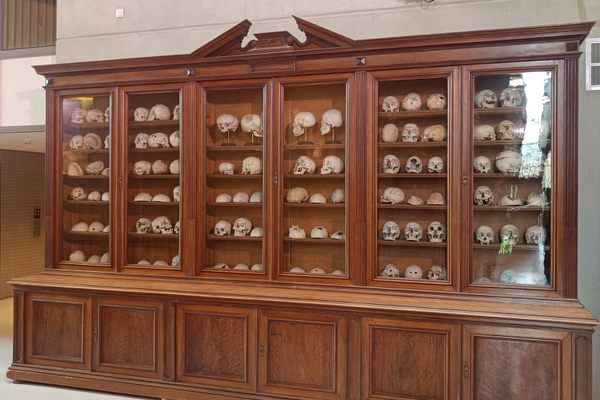About
Take a stroll through London’s Bloomsbury neighborhood, and you may notice some curious corners adorning the London School of Hygiene and Tropical Medicine. These gilded images depict creatures you’d rather not discover in your home.
In 1929, the London School of Hygiene and Tropical Medicine moved from the location it had occupied since the 1890s to a newer and more spacious building in Gower Street. In keeping with the Art Deco style that was popular at the time, an eccentric gilded frieze was designed for the building’s exterior, featuring a bestiary of vermin vectors of disease. The art was specially made by a local decorative metal firm and consists of 30 sculptures depicting seven species of insects, one arachnid, one rodent, and one reptile.
The only mammal represented is the black/brown rat, a vector for diseases such as bubonic plague, rat-bite fever, and leptospirosis. Its perennial parasite, the flea, which transmits bubonic plague in addition to typhus and tungiasis, can also be seen along with other insect vectors such as the body louse, which causes trench fever, and the tsetse fly, whose bite spreads the lethal sleeping sickness across human communities in Africa. Here too are the Aedes and Anopheles mosquitos that both transmit malaria, and the house fly, which is a mechanical vector for hundreds of diseases ranging from salmonella to anthrax. The one arachnid represented, the tick, transmits illnesses like Lyme disease and a number of deadly fevers.
The last two critters depicted on the frieze are not scientifically speaking genuine vectors of disease, but are nevertheless examples of creatures that continue to pose steep challenges to the efficacy of tropical medicine and hygiene. These are the Indian cobra snake, whose venomous bite kills thousands per year across many regions of Asia, and the humble bedbug, whose infestations notoriously cause outbreaks of scabies and a number of other dermatological problems worldwide.
It is perhaps unsurprising that the frieze proved to be a rather controversial piece of public art, and one whose subject matter failed to endear the crowds of Londoners who were more accustomed to the familiar beasts of heraldry such as lions and unicorns. Nevertheless, appreciation for the unique and magnificently morbid decoration has grown over the years since.
Related Tags
Know Before You Go
The artwork can be seen for free just outside the school. Pairs of panels are located under the second story windows along the end of the building on Keppel Street, and wrap around the corners onto Gower and Malet Streets. Simply walk by and gaze up at the building.
Community Contributors
Added By
Published
May 21, 2019
